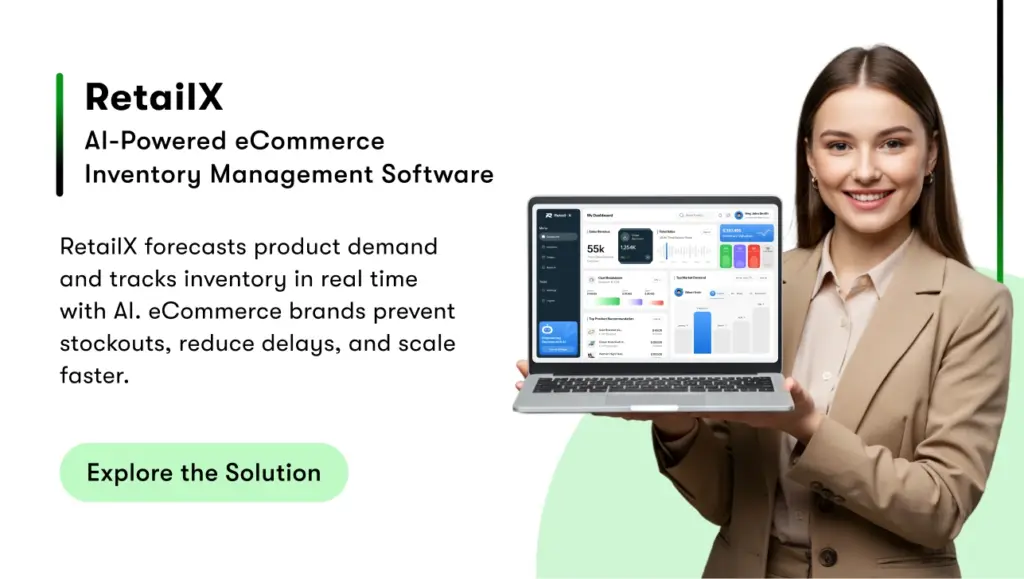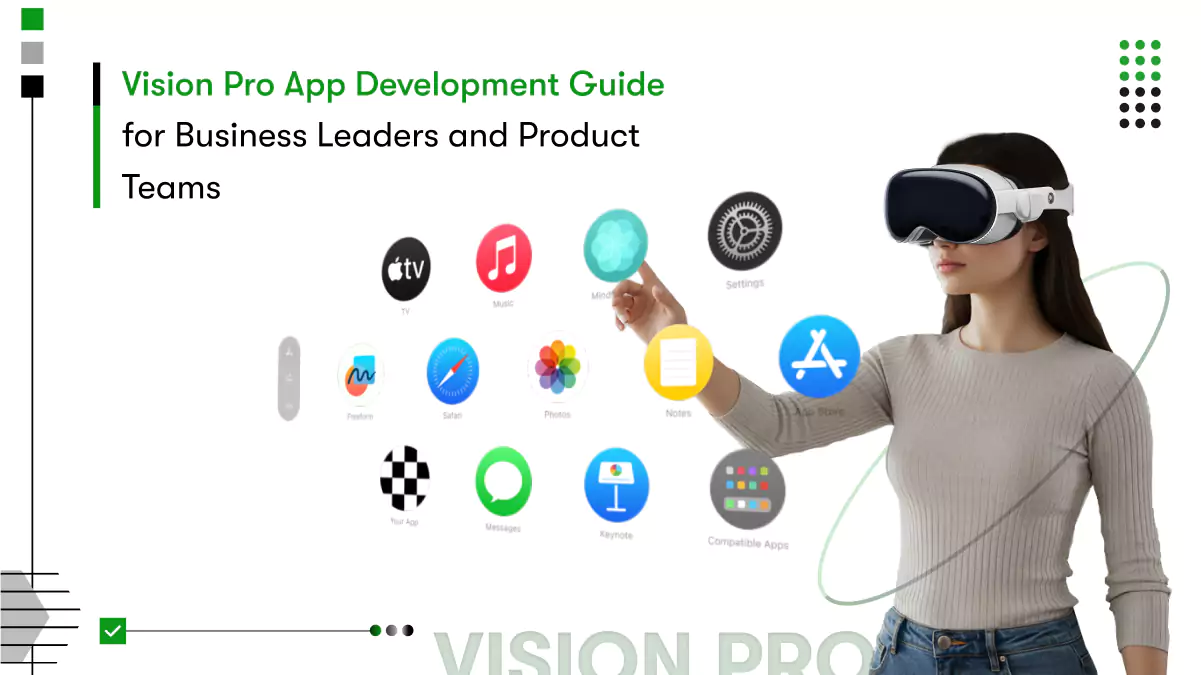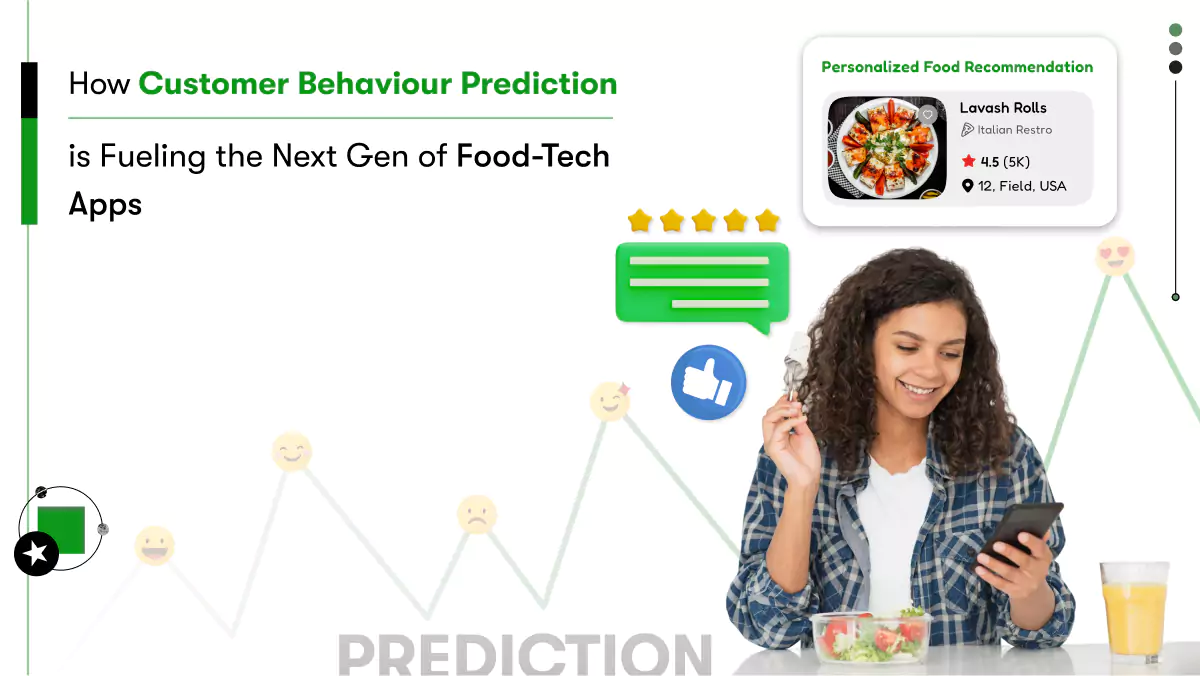Imagine discovering when you wake up that a large number of your online store’s clients have discreetly disappeared. Isn’t that disheartening? For eCommerce businesses, customer attrition is an unpleasant reality. The expense of replacing those clients is just as significant as the loss of immediate sales. This is where predictive churn modeling in eCommerce becomes essential, helping brands identify at-risk customers early and take proactive steps to retain them.
Acquiring a new customer may be 5 to 25 times costlier than holding on to one.
Even a small growth in retention is enough to double profits; an iconic Bain & Company study indicated that improving customer retention by 5% is enough to increase profits by 25% to 95%.
They’re not small potatoes. Keeping your hard-earned customers is more important than ever, as online customer acquisition costs have increased by about 60% in the last five years in eCommerce.
Managers and founders must endure the pain when loyal customers depart. It’s not just missed profits, advertising expense to acquire new consumers increases, and disgruntled former customers may whisper, damaging your reputation. In an ultracompetitive environment where shoppers can change with a click, customer churn is a quiet killer of growth.
So how can you end this vicious cycle? One effective strategy is to identify which customers will churn and step in ahead of time. This is the promise of Predictive Churn Modeling in eCommerce, a method that transforms your customer data into usable insights to retain customers. Businesses leveraging predictive analytics in eCommerce are seeing measurable gains by getting ahead of churn before it happens.
Ready? Let’s dive deep and uncover the path to proactive retention.
What is Customer Churn?
When customers stop making purchases from your online store, it’s known as customer churn in eCommerce. eCommerce churn is silent; customers just abruptly stop using the service, unlike subscription businesses where churn is evident through cancellations.
Churn is usually quantified by inactivity. For instance, a customer who has not made a purchase over the past 6 or 12 months is said to be churned. Churn rate is the number of customers who departed within a defined time period. Example, if you had 100 customers last year and 20 didn’t come back this year, your churn rate is 20%.
Churn is unavoidable in eCommerce. A “good” churn rate may be 2% to 8%. Yet, the industry average churn rate is around 22%. That is, about one out of every five customers does not return.
For most of the stores, it is worse. Over half of first buyers never make a repeat. Indeed, it is reported through some statistics, that churn rate in eCommerce is as high as 70%. That’s 7 out of every 10 customers vanishing with only one buy!
Why does Churn happen?
Since online shopping provides consumers with an infinite number of options. It’s easy to switch brands, lose interest, or simply forget about a store altogether. Loyalty is hard to earn and even harder to sustain.
The effect of churn is enormous. Each lost customer means lost revenue, wasted acquisition expense, and slowed growth. If left unchecked, churn can silently erode an online store’s profitability.
However, the good news is, churn is not random. It tends to follow definite patterns such as poor onboarding, a lack of personalization, slow shipping, or poor customer service. If you can identify these patterns early on, you can address them before they become a bigger issue.
Identifying and resolving churn is not a choice for eCommerce founders and managers. It’s a matter of survival.
Why does Churn Prediction matter for eCommerce stores?
Any business loses some customers, but losing too many customers too frequently can kill an online store’s growth. The reason is straightforward, the cost of losing a customer is much higher than losing a single sale. You lose all that customer’s future purchases; their entire potential lifetime value.
Additionally, you have to spend valuable marketing dollars to replace them with new customers. To add insult to injury, customer acquisition is becoming more expensive every year, due to increasing ad prices and competition. It’s like trying to fill a leaky bucket by cranking up the faucet, an expensive, inefficient game if you don’t stop the leaks.
Let’s be real for a moment; businesses that are thriving in today’s digital landscape are the ones turning to smarter tools like AI in eCommerce to patch those leaks before they drain growth potential.
Customer churn is not just a lost sale. It’s a ripple effect.
When a loyal customer departs:
- Your revenue falls
- Your Customer Lifetime Value (CLV) falls
- Your marketing cost of acquiring a customer (CAC) goes through the roof
- Your brand reputation quietly deteriorates
In today’s more competitive environment, customer retention is no longer a luxury, it’s a requirement.
However, with Predictive Analytics for Customer Retention, you can move from being reactive to proactive.
Wouldn’t you want to repair a small leak before it makes the ship sink?
Now that we have got the basics covered, let’s dive into what Predictive Churn Modeling is and how does it work.
What is Predictive Churn Modeling in eCommerce?
Let’s demystify predictive churn modeling. Fundamentally, predictive churn modeling is all about leveraging data to predict which customers will churn from you. It’s a use case for predictive analytics and machine learning where you look at historical customer actions and outcomes, who remained vs. who churned, to identify patterns.
Imagine it as an early warning system for customer exit. If you could anticipate in advance that, for example, a valued customer was getting cold feet, you’d be able to step in with a personalized gesture or incentive to win them back. Predictive churn modeling provides that preemption.
Predictive churn modeling in the eCommerce environment tends to make use of standard customer metrics. RFM analysis (Recency, Frequency, Monetary value) is one such traditional method; how long ago did the customer last shop, how frequently do they shop, and what does their average spend. Those with decreasing scores in these fields may be vulnerable.
Today’s churn models go a step further by considering items such as, did they use a coupon previously? Have they been browsing the site but not purchasing? Have they experienced any customer service problems or returns? Each item of information is a clue. The model ties the clues together with previous churners to find out what combination of factors is the telltale sign of a soon-to-churn customer.
For businesses building or optimizing their digital storefronts, our eCommerce app development guide offers additional insight into how to integrate these models directly into your platform’s architecture.
Churn prediction models can also tell you why customers will churn, by showing you which drivers are most responsible. That information is pure gold. It not only lets you target specific customers, but you can address root causes as well. If you find a pattern that many soon-to-churn customers complain about shipping being too slow, you know to optimize your shipping. This is how churn modeling informs product and service optimizations as well.
How Do Churn Prediction Models for Online Stores Work?
So, what do you do to develop a churn prediction model for your online store? You don’t have to be a data scientist to understand the fundamentals. It’s a process with steps that combines business acumen with data analysis.
Here’s a summary of the main steps to develop a churn prediction model:
1: Define Churn & Gather Customer Data
- Clearly define what “churn” means for your business: for example, a customer who hasn’t made a purchase in the last 6 months
- Collect data from multiple sources: purchase history, website behavior, email engagement, customer service logs, loyalty program records
- Include both demographic and behavioral data: age, location
- Clean the dataset: remove duplicates, correct errors, ensure consistency
2: Feature Engineering & Labeling
- Convert raw data into predictors a model can use: recency, frequency, monetary, site activity, customer support interactions
- Include categorical features: loyalty program member, preferred product
- Label each past customer as “Churned” or “Retained” based on your churn definition
- Analyze patterns: do churned users have longer gaps between purchases?
3: Model Selection & Training
- Choose machine learning models to predict churn: logistic regression, decision trees or random forests, gradient boosting models
- Split data into training set, test set
- Train your models and tune hyperparameters to improve performance
- Try different algorithms and compare results
4: Model Evaluation & Validation
- Use performance metrics to evaluate model effectiveness: accuracy, precision, recall, ROC-AUC
- Perform cross-validation to ensure consistency across data splits
- If results are poor, revisit feature selection or try different models
5: Deployment & Integration
a: Integrate the trained model into your business workflow:
- Connect to your CRM, marketing automation platform, or analytics dashboard
- Run churn predictions weekly or monthly
- Flag customers with churn risk >70% for intervention
b: Automate retention actions: personalized email offers, loyalty program outreach, discount triggers or surveys
c: Create a feedback loop:
- Feed new behavior and outcomes back into the model regularly
- Monitor model performance and retrain as needed
You don’t have to start all this from scratch. You can leverage tools such as BigQuery ML, DataRobot, and Azure ML that can automate most of this. And if you’re already using tools like eCommerce recommendation engines, integrating churn predictions with personalized product suggestions can amplify retention even further. However, knowing these steps provides you with complete control and confidence over your churn prediction engine.
What role does Machine Learning play in eCommerce Churn Prediction?
- Massive eCommerce datasets are easily handled by machine learning, which also finds hidden behavioral patterns that human analysts would miss. For example, customers who browse five times without making a purchase are unlikely to return.
- ML examines both single behaviors and multi-factor combinations, such as using a discount code plus not making another purchase for 30 days = 80% churn risk; these insights are only revealed by learning from extensive historical datasets.
- It picks up on non-linear and interaction-based patterns that are missed by traditional analysis, such as the fact that churn risk only increases when low purchase frequency and low product ratings are combined.
- Over time, machine learning adjusts to shifting consumer behavior; retrained models are able to identify new churn triggers, such as competitor pricing interest, that static reports would overlook.
Can Dynamic Pricing in eCommerce Really Transform Your Retail Strategy in 2025?
- By dividing users into behavior-based groups, such as bargain hunters and premium loyalists, advanced machine learning techniques like clustering allow for the development of customized retention strategies for each group.
- By identifying unusual silence from otherwise engaged customers, anomaly detection can identify churn early and enable preventative action.
- Data scientists and business teams working together guarantee that churn models are statistically correct and in line with actual customer insights.
- By identifying at-risk users before they depart and enabling actions like tailored offers or sales follow-ups, machine learning (ML) transforms retention from reactive to proactive.
- Automation becomes possible at scale, with ML scoring thousands or millions of customers and triggering actions based on churn probabilities.
What are The Best Predictive Models to Reduce eCommerce Churn?
When it comes to Predictive Churn Modeling for eCommerce, there is no single magic model suitable for all brands. The ideal predictive model is a function of the quality of your data, the sophistication of your customer behavior, and how you intend to act on churn predictions. That being said, a number of models have repeatedly been effective for customer churn prediction for eCommerce, particularly when paired with human intuition and real-time decisioning. In fact, many of these models overlap with techniques used in Predictive Analytics to Reduce Cart Abandonment, where understanding user intent and dropout triggers can significantly improve retention and conversion rates.

1. Logistic Regression
If you’re just starting out on your predictive analytics for customer retention journey, logistic regression is a great place to start. It predicts the chance of churn based on input features such as purchase frequency, recency, and order value.
Why it’s strong is its transparency, you’ll know precisely which factors drive churn up or down.
Why use it?
- Simple to implement and understand.
- Performs well when relationships between features are linear.
- Creates fast, actionable intel, e.g., “If the last purchase was 120+ days ago, churn risk is 60%.”
The model should be utilized as a benchmark or to help business teams learn why the model identified a customer to be at risk of churn.
2. Decision Trees & Random Forests
When linearity cannot be applied, tree models come to rescue. Decision tree replicates human reasoning by building branches such as “Did the customer visit the site this month?” or “Have they ordered over two times in the previous 90 days?” These if-then decisions enable easy mapping of churn behavior.
But one tree may not be stable. That’s why random forests, which blend hundreds of decision trees and take their average, are more trustworthy.
Why use them?
- Work with non-linear data and blended input types.
- Extract the most important churn signals and customer trends.
- More precise than logistic regression, yet still understandable.
They’re a perfect solution when your data contains behavior profiles and interactions difficult to reduce.
3. Gradient Boosting Machines
When accuracy is most critical, gradient boosting algorithms such as XGBoost and LightGBM are high-end options for churn prediction models for online stores. These algorithms function by sequentially constructing decision trees, each of which refines the errors of the previous one.
They often outperform simpler models in predictive power, especially when churn patterns are nuanced or buried under complex interactions.
Major benefits:
- High precision and accuracy.
- Able to learn nuanced churn signals, e.g., “Used a coupon + saw competitor prices = 78% churn risk.”
- Well-suited to big eCommerce datasets.
But these models are less interpretable and need to be fine-tuned to prevent overfitting.
4. Neural Networks
Although not typical for routine churn usage, neural networks may be worth using if you work with gigantic amounts of behavioral data or want to utilize sequences such as session flows or product views. They’re particularly beneficial when working with structured and unstructured data such as customer reviews, clickstreams, or chat logs.
Only use them if:
- You have extensive data science experience.
- Your dataset is gigantic.
- You require real-time user behavior adaptation.

5. Hybrid and Ensemble Approaches
To strike a balance between accuracy and clarity, many businesses combine models. For example, a gradient boosting model further prioritizes based on precision, and a logistic regression model can be used to screen for at-risk customers.
For instance:
- First layer: Use logistic regression to flag all customers with a churn risk greater than 40%.
- Second layer: To start customized campaigns, rank them with XGBoost.
There is no single “best” approach to predictive churn modeling in eCommerce. Start with logistic regression to establish a benchmark. As your data maturity improves, introduce random forests or gradient boosting. And always ask yourself: Is the model both actionable and accurate?
The greatest churn prediction models for online stores are not merely predictive. They’re about optimizing your team to prevent churn from occurring and turning retention into a repeatable, data-driven advantage.
What are some eCommerce Customer Retention Strategies using Predictive Analytics?
After your churn prediction model has identified high-risk customers, the hard work starts; retaining them. That is where predictive analytics for customer retention turns numbers into action. In many cases, these insights also reveal patterns related to trust and transaction security, making them valuable for areas like eCommerce Fraud Prevention as well.
Let’s see some proven eCommerce customer retention strategies specifically aimed at minimizing churn and maximizing customer lifetime value using data-driven insights at every step.

Target At-Risk Customers with Personalized Offers
Predictive models spot churn-risk customers so now you respond accordingly.
How to do it:
- Send hyper-personalized discount offers based on purchase history or browsing patterns.
- Suggest products from wishlists or recently browsed categories.
- Provide early access to new collections or limited-edition bundles.
Example: Amazon applies predictive churn modeling in eCommerce to re-engage high-risk users with hyper-personalized offers, increasing repeat purchase rates.
Implement Loyalty Programs & VIP Perks
Loyalty is the cure for churn. Your model informs you who your loyalists are; now reward them.
Strategies:
- Implement points-based programs for purchases, reviews, or referrals.
- Provide tiered benefits: cashback, free gifts, priority support.
- Promote loyal buyers to VIP status with free shipping or limited-edition access.
Impact: 80% of U.S. shoppers are members of at least one loyalty program, boosting repeat purchase probability by 60%.
Provide Exceptional Customer Service
Predictive churn models usually alert unhappy customers before they defect; give them a reason to remain.
Tactics:
- Spot customers with negative support history or low satisfaction ratings.
- Reach out proactively with apologies, solutions, or goodwill offers.
- Watch for sudden spikes in support activity and move quickly.
Stats that matter:
- 71% of customers defect because of poor service.
- 83% say outstanding service earns their long-term loyalty.
Re-engage Through Timely Communication
Don’t let them disappear, a gentle push will make them return.
Method:
Create trigger-based, automated emails:
- “We miss you” at 30 days
- “You may love these” on last views
Deploy retargeting ads and push notifications with clever timing.
Gradually increase levels of incentives if inactivity persists.
Pro tip: Let your churn prediction models for online stores dictate the optimal timing, e.g., if churn risk increases at 45 days, act at 30.
Gather Feedback and Fix Pain Points
Some churn, use to learn.
Steps:
- Send exit surveys like, “Why did you stop shopping with us?”
- Compare answers to determine repeated issues such as slow shipping, insufficient variety of products.
- Refine your churn model with fresh feedback-based features such as return rates or support ticket load.
Loop it back: Your model gets smarter. Your service gets sharper.
Great customer churn prediction for eCommerce is only a phrase unless you act. These strategies allow you to tailor retention at a scale where one audience receives discount promotion and another receives service-level engagement. It is no longer a matter of a broad network. Predictive analytics allows you to shoot at target and hold on with purpose.
Real-World Case Study: ASOS Reduces Customer Churn with Predictive Analytics
The Challenge
ASOS, one of the world’s largest online fashion retailers, was struggling with a prevalent eCommerce challenge, decreasing repeat customer rates and rising acquisition costs.
With more than 26 million active customers and rapidly moving stock, ASOS needed to know why customers were dropping off and how to win them back before they churned.
They knew that sending one-size-fits-all campaigns were no longer cutting it.
So, what did they do?
The Solution
ASOS implemented Azure Machine Learning services to develop stable churn prediction models. Their data scientists utilized:
- Past purchase behavior
- Transaction frequency and timing
- Website browsing history
- Response to marketing campaigns
They developed predictive models that identified early warning signs of disengagement, including:
- Decline in browsing frequency
- Decline in purchase frequency
- Failure to respond to promotional email campaigns
These signals were applied to score every customer’s potential to churn.
Rather than waiting for inactivity, ASOS started actively reminding at-risk users with targeted incentives.
The Result
ASOS achieved the following quantifiable effects:
- Sharp decline in churn rates of the target user groups
- Increased customer lifetime value (CLV)
- Boost in campaign ROI through precision targeting
- Reduced time between purchase occasions for re-engaged customers
While ASOS did not reveal the actual percentage decline in churn, internal sources quoted by Microsoft corroborated double-digit increases in customer retention rates since adopting predictive analytics initiatives.
Takeaway for your eCommerce store
ASOS didn’t invent the wheel, they just used data more intelligently. By investing in eCommerce customer churn prediction, they converted passive customer loss into actional retention campaigns.
And the best news? These tactics are scalable for businesses of any size.
Tools such as:
- Microsoft Azure ML
- Google Cloud AI
- Amazon SageMaker
- Even no-code tools like RetentionX or Pecan AI
…can be used to construct predictive churn models without having a huge in-house AI team.

Conclusion: Stay Ahead of the Churn
In the war for customer loyalty, predictive churn modeling in eCommerce is your ace up the sleeve. We’ve seen how knowing and forecasting churn can transform the way you handle retention. Rather than playing catch-up after customers have departed, you can now predict who is likely to leave and take proactive steps to keep them engaged.
When it comes to executing data-driven eCommerce Customer Retention Strategies, having the right technology partner can be the difference between success and failure. That’s where Kody Technolab Ltd comes in. As a top eCommerce app development company, Kody brings extensive industry knowledge and innovative technology together to enable online retailers not only to comprehend customer behavior but to act on it before it’s too late.
What really makes Kody stand out is their emphasis on creating the best predictive models to reduce eCommerce churn, specifically suited to the individual dynamics of your company.
If your repeat purchases are eroding or your customer acquisition costs are too high, Kody Technolab gives you complete end-to-end support; from integrating your data and building models to real-time churn scoring and dashboard visualization. Their eCommerce predictive analytics consulting solutions are designed to provide actionable insights that yield measurable outcomes.












 Contact Information
Contact Information